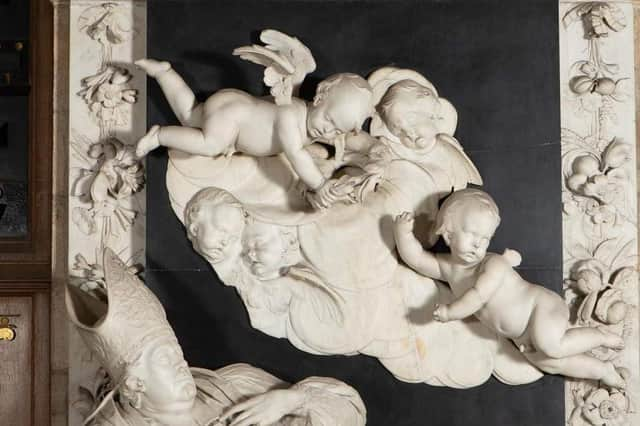Grinling Gibbons: Celebrating England's greatest ever wood carver in York - where he learnt the tricks of the trade


And the legacy of Grinling Gibbons has been celebrated in York - where he learned so much of his craft - as makers and carvers joined to contemplate how he has informed their work.
The Grinling Gibbons Modern Legacy Project marked the ending of celebrations for the woodcarver’s Tercentenary Year - the 300th anniversary of his death in 1721.
Advertisement
Hide AdAdvertisement
Hide AdGibbons is renowned for his intricate wood-carving on some of the nation’s most iconic buildings, including Windsor Castle, Hampton Court Palace, and St Paul’s Cathedral.
But it was York where the young Gibbons was apprenticed in the 1660s.
Arriving in the city from his native Netherlands, he spent three years honing his craft before moving to London where he became Master Carver to King William III in 1693.
Within the city, his work can be seen at York Minster in his monuments to former Archbishops Dolben, Lamplugh and Sterne.
Advertisement
Hide AdAdvertisement
Hide AdBut it was the impact of his work on modern makers which was celebrated by the Grinling Gibbons Modern Legacy Project at York’s Merchant Adventurers Hall earlier this week.
The exhibition, Art & Ornament, was run by the Master Carvers’ Association.
A spokesperson said: “The tercentenary of Grinling Gibbons, preeminent in the pantheon of sculptors, is an anniversary Master Carvers’ Association has chosen to mark with a demonstration of current practice, the living legacy of his influence.
“That we as Gibbons’ heirs can contemplate a Modern Legacy Project speaks volumes for the high value which we and our compatriots put on our heritage.”
Advertisement
Hide AdAdvertisement
Hide AdCarvers whose work was showcased in the exhibition included Hugh Wedderburn, Simon Kidd and Clunie Fretton.
The King David panel, carved by Gibbons and normally in York’s Fairfax House, also formed part of the exhibition.
The intricate panel is based on Psalms 148 and 150 and shows King David holding a concert playing a harp and surrounded by cherubs.
The panel is believed to have been designed for an organ case in a church or a chapel.
Advertisement
Hide AdAdvertisement
Hide AdThe celebrations continued with an evening recital at St Michael-le-Belfry church, next to York Minster, where Gibbons himself worshipped.
Grinling Gibbons: A Musical Man saw pieces played of some of the baroque period’s most eminent composers including Henry Purcell, Thomas Campion and George Handel.
Asymposium was also held on Monday at York’s Belfry Hall to discuss Gibbons’ legacy and how it can be taken forward following the tercentenary celebrations.
Speakers included Master Carvers’ Association and former St Paul’s Cathedral woodcarver Tony Webb.
